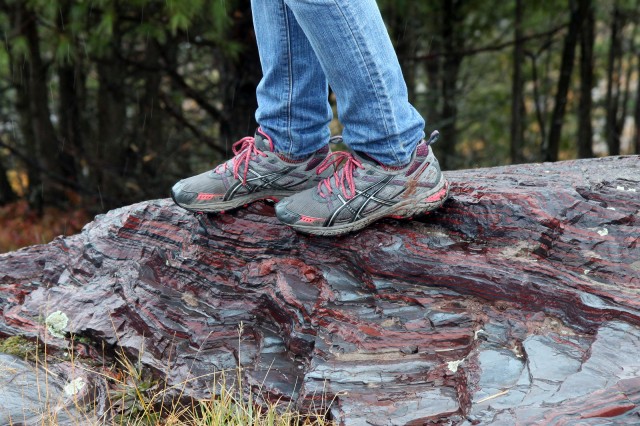Which means photosynthesis is at least that old.
by Scott K. Johnson
You’ve heard the story before: if it weren’t for our friends the photosynthetic cyanobacteria, you wouldn’t be able to read this out loud because there would be no oxygen to breathe—and also you would never have existed. Oxygen-producing photosynthesis changed Earth’s atmosphere and paved the way for multicellular life, which would run around eating the photosynthetic things by way of saying thank you.
The evidence for this transition to an oxygenated atmosphere is apparent in a beautiful type of rock called a banded iron formation. The type of rock, which contains large amounts of iron oxide minerals (it’s an excellent ore), showed up in the geologic record in a big way around 2.4 billion years ago. That marks the start of the “Great Oxygenation Event," when oxygen levels really started to take off.
But that oversimplifies the story. Microbial life had already been around for over a billion years at that point, and there’s good reason to think that photosynthesis developed pretty early on. There are even a few older banded iron formations, though the oldest may not have required an oxygenated atmosphere. The early history of oxygen—how much was around and how much it fluctuated—is not so clear. A recent study adds to that history by examining some nearly three-billion-year-old rocks in South Africa.
The technique used to suss out evidence for oxygen's presence is the same as a similar study we covered several years ago. When oxygen reacts with some elements, it leaves a mark that can be preserved in the rock record. In minerals, chromium is mostly found in a +3 state (that is, three electrons short of a neutral charge). In that form, it doesn’t dissolve in water very readily. But when chromium reacts with oxygen (and manganese), it loses three electrons and enters a +6 state that is much more mobile in water.
 |
| Oxygen-breathing organism standing on some banded iron formation. |
That transformation is hardly indelible, obviously. Other reactions can convert it back to a +3 state. In order to find preserved evidence of this activity, you have to look at the isotopes. It turns out that the oxidation reaction tends to prefer the extra-neutron-bearing chromium-53 over the slightly more svelte chromium-52. That means that the mobile +6 chromium has a greater frequency of chromium-53 atoms, and the +3 chromium that gets left behind is missing some.
A group of researchers led by Sean Crowe of the University of Southern Denmark took advantage of this fact to analyze a pair of 2.92-2.96 billion year old rocks for evidence of oxidation. One includes preserved soil that formed from the breakdown of exposed volcanic rock. The other is composed of sediment that was deposited in a shallow ocean, just offshore.
If there was oxygen in the atmosphere at the time, it would have affected the weathering that took place in that soil. Oxidized (and therefore mobile) chromium would have washed out of the soil with the rain, flowing away in groundwater or streams toward the ocean. Ocean sediments would reflect the flip side of this, containing some of that mobile chromium. In terms of the isotopes, this would result in a shortage of chromium-53 in the soil and an excess in the ocean sediment. In their measurements of the two rocks, the researchers saw just that.
They looked for uranium as well, which also becomes mobile when it’s oxidized. Rather than a ratio of isotopes, the story there is simply abundance. They expected to find that uranium had been depleted in the soil and had accumulated in the marine sediment. There was definitely extra uranium in the ocean sediment and some signs of it having washed out of the soil as well.
Based on the amount of oxygen required to leave those chemical clues behind, the researchers calculate that there would have been something like 0.03 percent as much oxygen as we have in the atmosphere today. That may not sound like much, but it’s much more than chemical reactions in the atmosphere (where light can split water and carbon dioxide molecules) could have generated. Because of this, the researchers believe the oxygen must have been produced by photosynthetic cyanobacteria. Which in turn suggests that photosynthesis is at least 3 billion years old.
While there are older rocks that may indicate some oxygen availability, these are the oldest ones in which evidence of oxidative weathering has been found by examining the chromium isotopes. That opens another window on the timeline of oxygen’s fits and starts before it finally took off.
Courtesy: arstechnica



0 comments:
Post a Comment